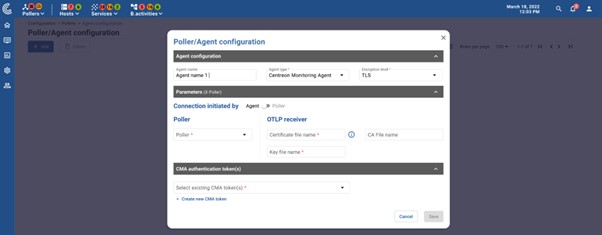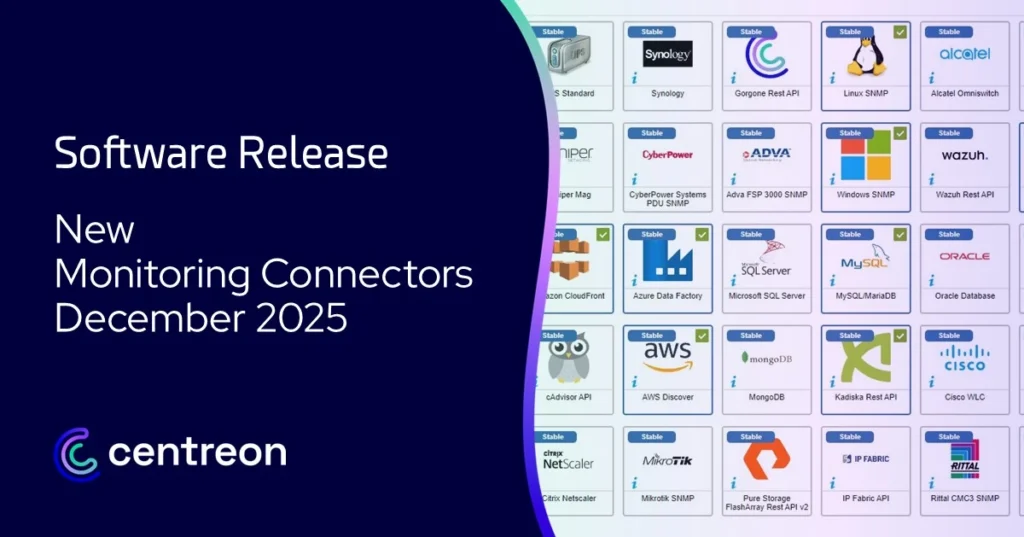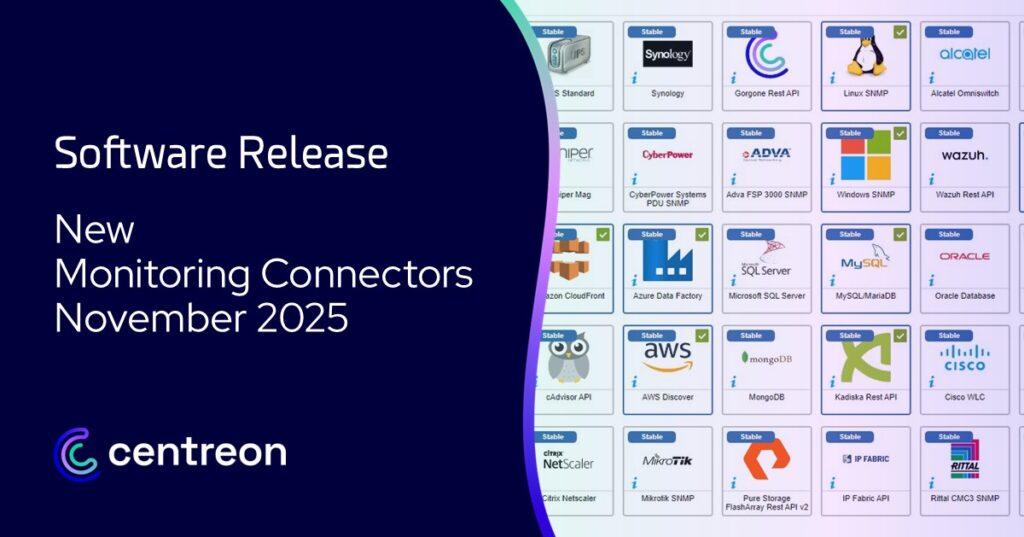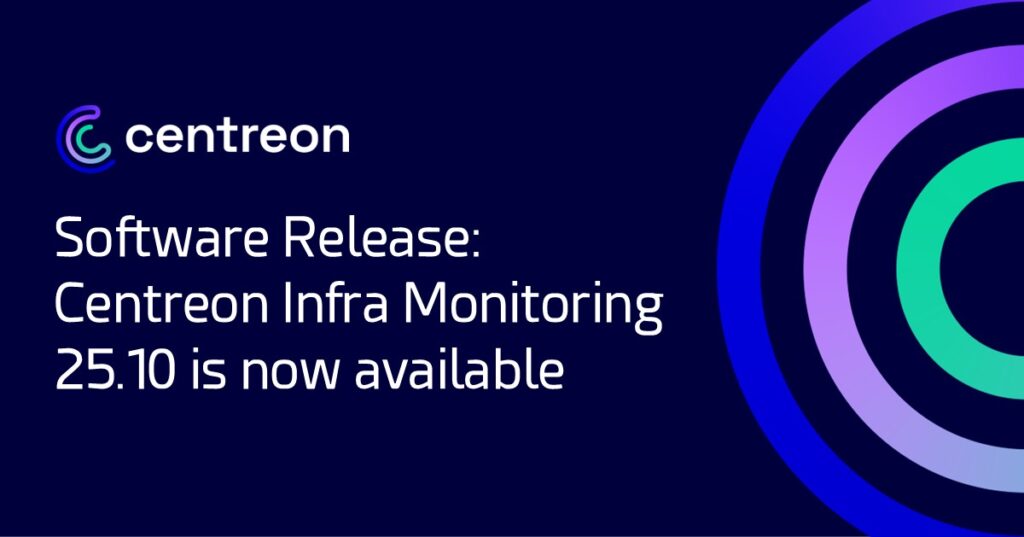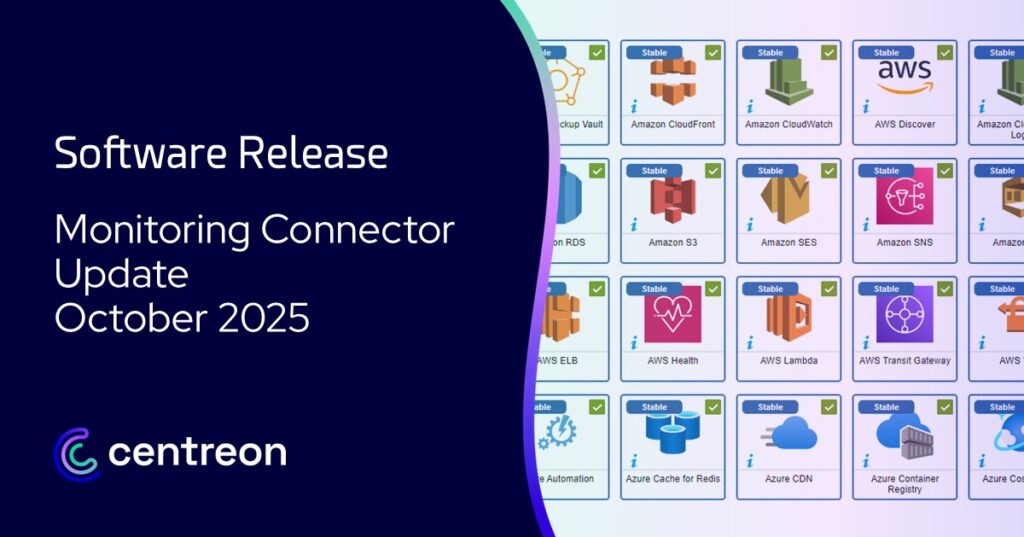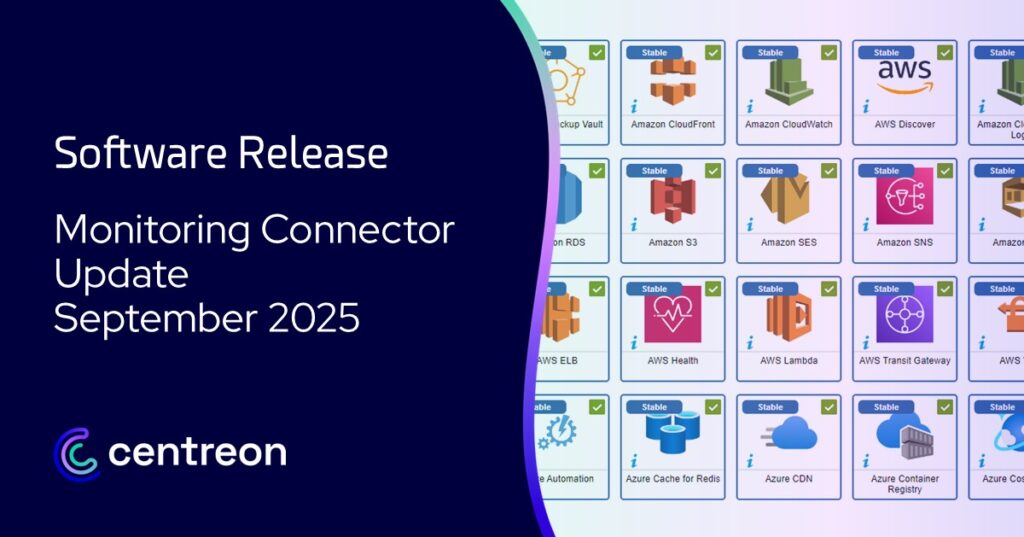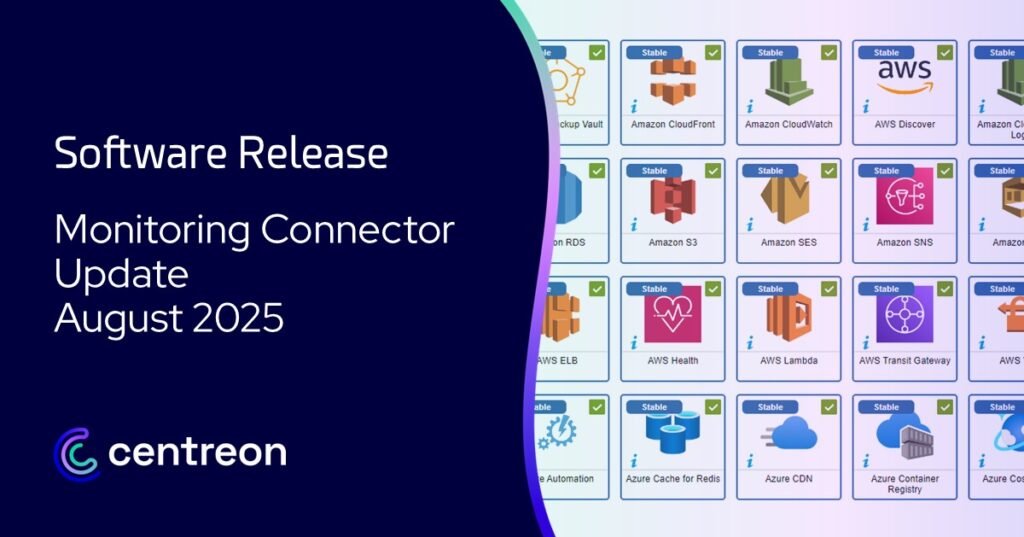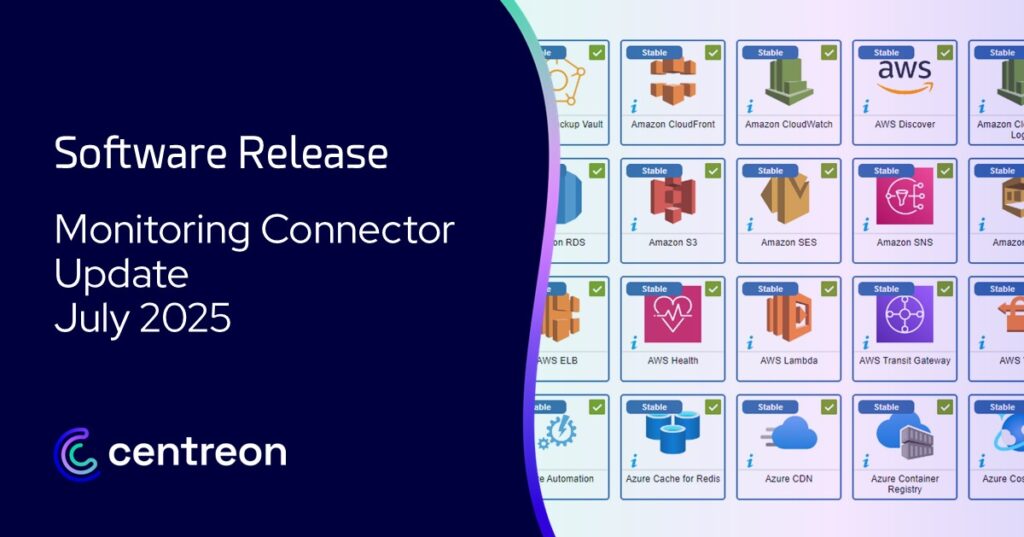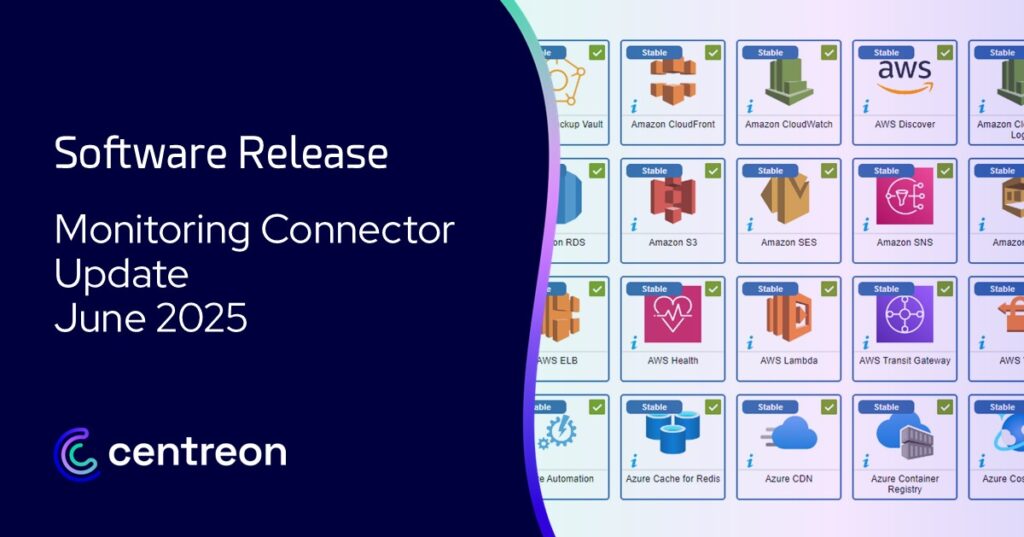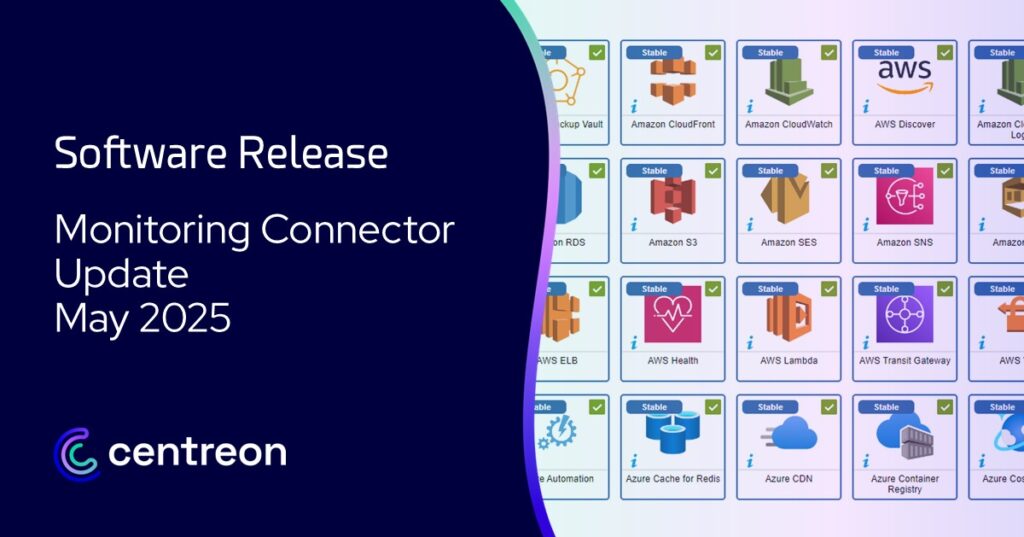After a year-long beta testing phase and much feedback from the open source community, customers and partners, we are proud to announce that the new Centreon monitoring agent, called Centreon Monitoring Agent, is now available in General Availability status.
Why a Centreon Monitoring Agent?
While it’s true that one of the strengths of the Centreon platform is its ability to monitor all kinds of environments in active mode, without installing an agent on the equipment being monitored, there are nevertheless certain use cases that benefit from the deployment of a software agent:
- For example, when security policies only allow outgoing flows from a device, and it is not possible to implement active controls from a poller using protocols such as SNMP.
- The same applies when an entire remote site is protected in this way, and it is not possible to install a poller locally.
- Or when it’s necessary to run a script locally on a machine, either for security reasons (authorized rights and/or protocols) or for performance reasons.
For all these use cases, the Centreon platform has long relied on agents offered by the open source community, such as NRPE and NSClient++.
But two reasons led us to develop our own agent, the Centreon Monitoring Agent, which is the subject of this announcement:
- Monitoring is evolving towards observability, which favors new methods of passively collecting metrics, but also logs or traces, based on the Open Telemetry framework: a new technological foundation was needed.
- In view of its importance in future observability architectures, Centreon is determined to develop and maintain a modern open source agent of its own, to guarantee its quality and longevity.
What is the Centreon Monitoring Agent?
The Centreon Monitoring Agent is an open source software agent developed and maintained by Centreon, which collects metrics, calculates statuses and ensures bidirectional communication with the Centreon Poller.
It is available for Windows and Linux environments. Communication with the poller is based on the Open Telemetry framework, and is encrypted.
The agent can run controls natively or rely on Centreon plugins to collect data. Customizable Nagios-based plugins are also compatible with the agent.
Two new Monitoring connectors, one for Windows servers, the other for Linux servers, simplify monitoring configuration by providing configuration templates to the agent.
Features
Supported operating systems
The Centreon Monitoring Agent can be installed on the following operating systems:
- Windows 10 / 11
- Windows Server 2016 / 2019 / 2022
- RHEL/Oracle Linux/Alma Linux 8 & 9
- Debian 11 & 12
- Ubuntu 22.04/24.04 LTS
Installation methods
The agent and any plug-ins used are installed on the host to be monitored:
- The Windows agent can be installed using a graphical installer, or silently in command-line mode. Associated plug-ins are automatically installed.
- The Linux agent is installed from the Centreon repositories. Plugins can be installed “online” (from the Centreon repository) or “offline” (from a local repository).
The different versions of the agent and the Windows installer are available at download.centreon.com.
Collecting and monitoring metrics
For Windows and Linux environments, the agent monitors the following metrics natively or via plug-ins:
- CPU
- Memory
- Uptime
- Swap
- Storage
- Services
- Health
- Eventlog
- Process
- Counter
- Taskscheduler
- File
This scope can be easily extended with other Centreon plug-ins or custom scripts.
Poller-agent communication
The latest minor release of the Centreon 24.10 platform introduces a new interface for configuring communications between Centreon Pollers and Centreon Monitoring Agents.
- Two connection modes are available: agent-initiated connection or poller-initiated connection (for DMZ hosts or pollers with non-static IP addresses).
- Communication flows are encrypted, and an interface is provided for configuring the authentication token.
- These configuration elements can also be accessed via a Rest API, enabling full deployment automation.
The agent retrieves its configuration from its poller each time it is updated.
For testing purposes, a ‘No TLS’ mode can be activated, with a connection limited to 1 hour.
The minimum software versions of the components providing these improvements are Centreon Collect 24.10.8 and Centreon Web 24.10.9, as well as the August version of the Monitoring connectors.
Performance
The Centreon agent has been developed to minimize network impact and resource consumption on both the host machine and the poller.
A poller, even with a low CPU/RAM configuration, can support up to 10,000 agents.
Monitoring configuration
The Centreon agent fits into the Centreon monitoring architecture, which uses Monitoring connectors to simplify the configuration of metrics to be collected and monitored.
Once communication between poller and agent has been configured and the agent installed, simply create the host on the Centreon server using the Windows or Linux host model provided by the monitoring connector.
Why and how to migrate from NSClient++ and NRPE?
The Centreon Monitoring Agent offers a number of advantages over NSClient and NRPE:
- Better performance in executing controls, i.e. reduced impact on the host.
- Enhanced security, implemented by default (TLS encryption, authentication token).
- Easy configuration via a dedicated GUI, especially for connection security.
- An “offline” mode for installing plugins on hosts without Internet access.
- Command-line installation mode for mass deployment under Windows.
- A monitoring method based solely on passive controls.
On The Watch platform, Centreon provides a procedure for migrating NSClient++ and NRPE environments to the Centreon Monitoring Agent.
What does the future hold for the Centreon Monitoring Agent?
Centreon Monitoring Agent provides IT teams with simpler, faster and smarter monitoring. It simplifies the monitoring of hybrid and ephemeral environments, and marks a new step towards observability. These developments are part of the Centreon roadmap for the medium and long term.
In the short term, the following evolutions are under study:
- TLS Insecure connection mode (no Common Name verification), useful for shared pollers, for example, or when you want to use the same certificate on a set of pollers and a wildcard is not possible for security reasons.
- Optimized management of large volumes of hosts in the “Poller-initiated connection” configuration, with a more compact display, as well as the addition of pagination and a search zone.
- Active mode for specific use cases (additional checks, immediate checks, order tests, etc.).
- Automatic registration of new agents.
- Native cloud agent (Kubernetes).
- Connection of one agent to several pollers: useful, for example, for test environments separate from the production environment.
Resources
All the information you need to deploy and use the Centreon agent can be found in the dedicated documentation.
You can also join The Watch group, to exchange ideas with other users and with the product and R&D teams in charge of agent development.



